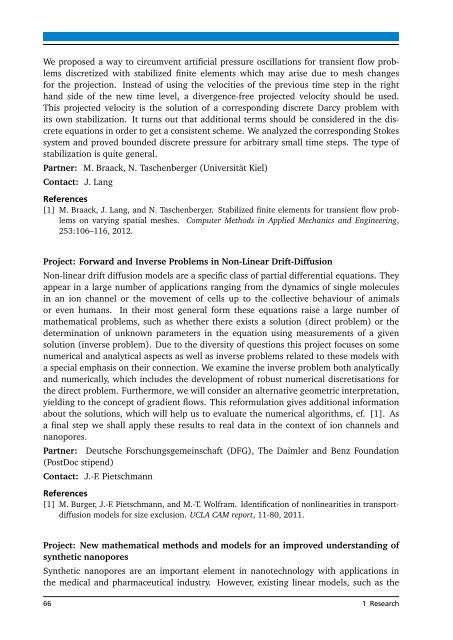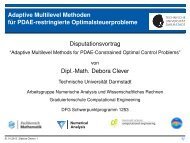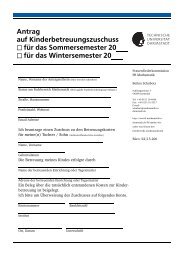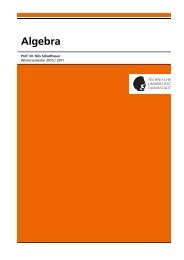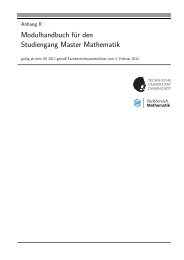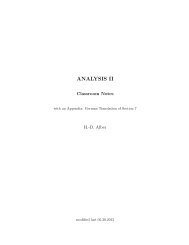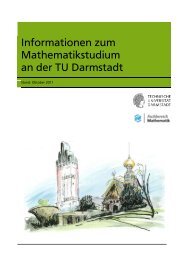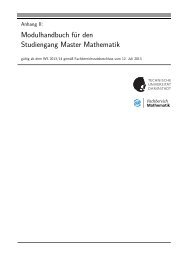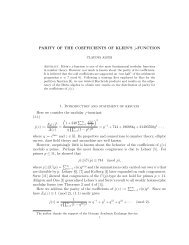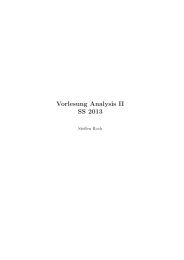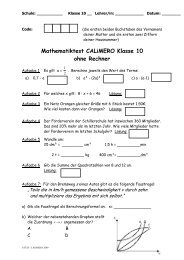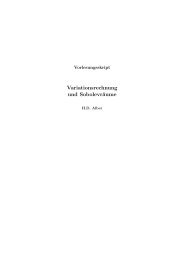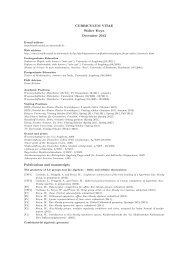Biannual Report - Fachbereich Mathematik - Technische Universität ...
Biannual Report - Fachbereich Mathematik - Technische Universität ...
Biannual Report - Fachbereich Mathematik - Technische Universität ...
Create successful ePaper yourself
Turn your PDF publications into a flip-book with our unique Google optimized e-Paper software.
We proposed a way to circumvent artificial pressure oscillations for transient flow problems<br />
discretized with stabilized finite elements which may arise due to mesh changes<br />
for the projection. Instead of using the velocities of the previous time step in the right<br />
hand side of the new time level, a divergence-free projected velocity should be used.<br />
This projected velocity is the solution of a corresponding discrete Darcy problem with<br />
its own stabilization. It turns out that additional terms should be considered in the discrete<br />
equations in order to get a consistent scheme. We analyzed the corresponding Stokes<br />
system and proved bounded discrete pressure for arbitrary small time steps. The type of<br />
stabilization is quite general.<br />
Partner: M. Braack, N. Taschenberger (Universität Kiel)<br />
Contact: J. Lang<br />
References<br />
[1] M. Braack, J. Lang, and N. Taschenberger. Stabilized finite elements for transient flow problems<br />
on varying spatial meshes. Computer Methods in Applied Mechanics and Engineering,<br />
253:106–116, 2012.<br />
Project: Forward and Inverse Problems in Non-Linear Drift-Diffusion<br />
Non-linear drift diffusion models are a specific class of partial differential equations. They<br />
appear in a large number of applications ranging from the dynamics of single molecules<br />
in an ion channel or the movement of cells up to the collective behaviour of animals<br />
or even humans. In their most general form these equations raise a large number of<br />
mathematical problems, such as whether there exists a solution (direct problem) or the<br />
determination of unknown parameters in the equation using measurements of a given<br />
solution (inverse problem). Due to the diversity of questions this project focuses on some<br />
numerical and analytical aspects as well as inverse problems related to these models with<br />
a special emphasis on their connection. We examine the inverse problem both analytically<br />
and numerically, which includes the development of robust numerical discretisations for<br />
the direct problem. Furthermore, we will consider an alternative geometric interpretation,<br />
yielding to the concept of gradient flows. This reformulation gives additional information<br />
about the solutions, which will help us to evaluate the numerical algorithms, cf. [1]. As<br />
a final step we shall apply these results to real data in the context of ion channels and<br />
nanopores.<br />
Partner: Deutsche Forschungsgemeinschaft (DFG), The Daimler and Benz Foundation<br />
(PostDoc stipend)<br />
Contact: J.-F. Pietschmann<br />
References<br />
[1] M. Burger, J.-F. Pietschmann, and M.-T. Wolfram. Identification of nonlinearities in transportdiffusion<br />
models for size exclusion. UCLA CAM report, 11-80, 2011.<br />
Project: New mathematical methods and models for an improved understanding of<br />
synthetic nanopores<br />
Synthetic nanopores are an important element in nanotechnology with applications in<br />
the medical and pharmaceutical industry. However, existing linear models, such as the<br />
66 1 Research


